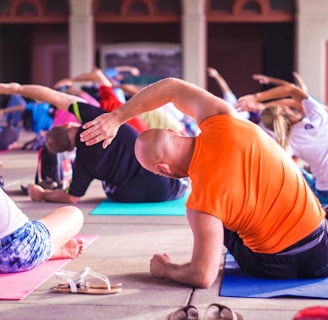Exploring the Global Wellness Economy Monitor 2024 - Part I
Physical Wellness: Focuses on maintaining optimal physical health through exercise, nutrition, sleep, and preventive healthcare practices.
WELLNESSHEALTHFITNESS
11/30/20242 min read


Part I: Physical Wellness – The Foundation of Holistic Health
Introduction
Physical wellness is the cornerstone of holistic health, forming the base upon which other dimensions of wellness are built. According to the Global Wellness Economy Monitor 2024, physical wellness encompasses activities, choices, and lifestyles that promote optimal functioning of the body. In 2023 alone, the physical activity sector reached a market size of $1.06 trillion, reflecting its critical role in the global wellness economy.
In this article, we delve into the essentials of physical wellness, its components, and the actionable steps individuals can take to enhance their physical health.
Defining Physical Wellness
Physical wellness refers to maintaining the body’s optimal condition through regular exercise, proper nutrition, adequate sleep, and preventive healthcare. Unlike mere fitness, physical wellness focuses on a balanced approach to health that enhances longevity, energy, and resilience to illnesses.
Key Components of Physical Wellness
Exercise and Movement
The Global Wellness Institute highlights that movement is medicine. Regular physical activity improves cardiovascular health, strengthens muscles, and boosts mental health. Activities such as yoga, Pilates, and strength training have seen a significant surge post-pandemic as individuals prioritize accessible fitness routines.Nutrition
Proper nutrition supports bodily functions and prevents chronic diseases. A 2022 study published in The Lancet estimated that poor diets contribute to 11 million deaths annually worldwide. Embracing balanced eating habits with nutrient-dense foods can combat this trend.Sleep
Sleep is an often-overlooked pillar of physical wellness. The CDC recommends 7-9 hours of sleep per night for adults. Research shows that quality sleep enhances cognitive functions and immunity, making it vital for holistic health.Preventive Healthcare
Regular health checkups and vaccinations form the foundation of disease prevention. The pandemic underscored the value of preventive care, from routine screenings to maintaining a robust immune system.
Emerging Trends in Physical Wellness
Technology Integration: Apps and wearable devices like Fitbit and Apple Watch have revolutionized how individuals track their health metrics.
Mindful Fitness: Practices such as Tai Chi and yoga emphasize both physical strength and mental well-being.
At-Home Workouts: The pandemic catalyzed the growth of virtual fitness platforms like Peloton and guided workouts on YouTube.
Actionable Tips for Physical Wellness
Incorporate Variety in Exercise: Mix cardio, strength, and flexibility exercises to target all aspects of fitness.
Practice Mindful Eating: Focus on whole, unprocessed foods while moderating sugar and sodium intake.
Prioritize Sleep Hygiene: Create a bedtime routine and limit screen time before bed.
Adopt Preventive Practices: Schedule annual physicals and follow vaccination guidelines.
Global Insights
The Global Wellness Economy Monitor 2024 reports that North America leads in per capita wellness spending at $5,768, with significant investments in physical wellness activities. The Asia-Pacific region, while trailing in expenditure, is rapidly adopting tech-enabled fitness and wellness solutions.
Conclusion
Physical wellness is a dynamic, ongoing process requiring conscious effort and informed choices. By embracing regular exercise, balanced nutrition, adequate sleep, and preventive healthcare, individuals can build a strong foundation for overall well-being.
Citations
Global Wellness Institute, Global Wellness Economy Monitor 2024.
GBD 2019 Risk Factors Collaborators, The Lancet. "Health Effects of Dietary Risks in 195 Countries, 1990–2017".
Centers for Disease Control and Prevention. "Sleep and Health".
Connect
Explore wellness topics and connect with providers.
Contact Us
Join
info@theglobalwellnessproject.com
© 2024. All rights reserved.
